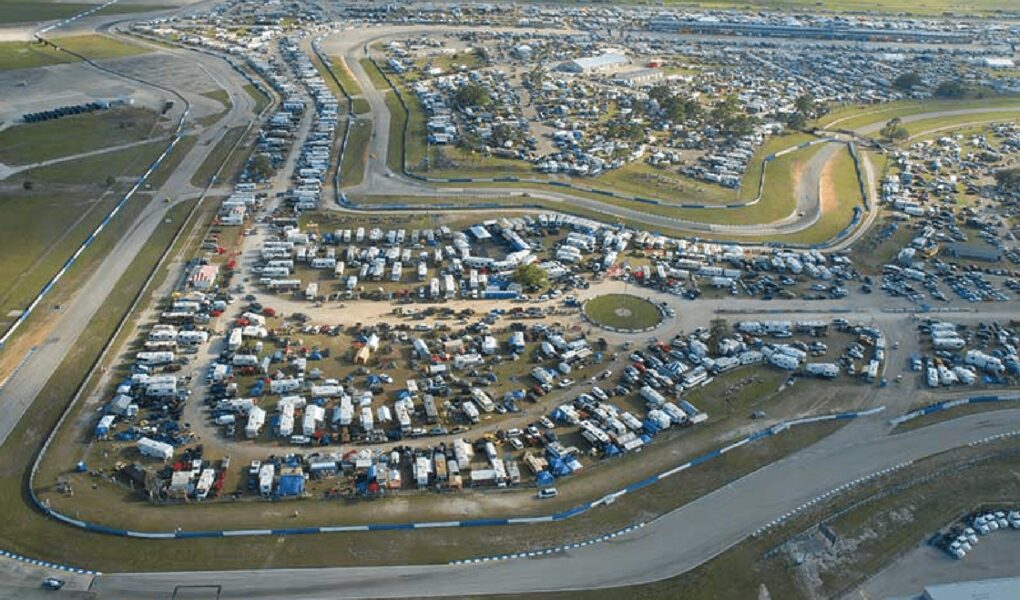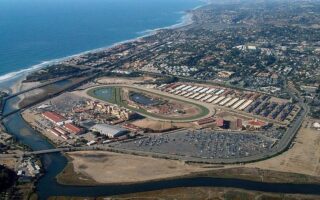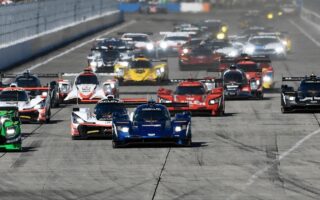Nestled in the heart of Florida’s picturesque landscape, the Sebring Race Track stands as a testament to the exhilarating world of motorsport. With its winding turns, demanding straights, and a storied history dating back to the 1950s, this iconic circuit has become synonymous with endurance racing. Originally a World War II airfield, Sebring transformed into a racing haven, drawing enthusiasts and competitors alike from across the globe. Beyond the roar of engines and the thrill of competition, the track is steeped in tradition, embodying the spirit of innovation and resilience that defines the automotive culture. In this article, we will explore the rich history, the unique features of Sebring, and its ongoing legacy as a premier destination for both drivers and fans. Join us on a journey through time and speed at one of the most revered racetracks in the world.
Table of Contents
- Exploring the Rich History of Sebring Race Track
- Unraveling the Unique Challenges of the Sebring Circuit
- Essential Tips for First-Time Visitors to Sebring Race Track
- Celebrating Speed: A Look at Notable Events and Future Prospects at Sebring
- Q&A
- The Conclusion
Exploring the Rich History of Sebring Race Track
The Sebring Race Track, famously known for its iconic endurance races, has a storied history that dates back to its inception in 1950. Originally constructed on a World War II airbase, this venue has evolved into a hallowed ground for motorsport enthusiasts. The track’s unique layout, combining both smooth stretches and challenging corners, captivates drivers and spectators alike. Over the decades, it has become a crucial stop in the sports car racing calendar, attracting legendary drivers and teams from across the globe. The vibrant atmosphere is palpable, especially during events like the 12 Hours of Sebring, which is celebrated not just for the intense competition but also for its festive environment.
Moreover, the Sebring Race Track has played host to numerous significant automotive milestones. Among its achievements, the track has witnessed groundbreaking technological advancements in racing cars and has been the stage for record-breaking performances. Its legacy is bolstered by partnerships with premier racing organizations, which have further solidified its reputation. The following table highlights some of the key historical events associated with Sebring:
| Date | Event | Notable Participants |
|---|---|---|
| 1952 | First 12 Hours of Sebring | Porsche, Ferrari |
| 1966 | Ford Dominance Begins | Ford GT40 |
| 1972 | Record Entries | Various Manufacturers |
| 2010 | 50th Anniversary | Legends of Racing |
Unraveling the Unique Challenges of the Sebring Circuit
At the Sebring Circuit, drivers face a myriad of unique challenges that set this track apart from traditional road courses. Its rugged surface, characterized by a patchwork of asphalt and concrete, provides inconsistent grip levels that demand acute awareness and adaptability. The layout features a combination of tight corners and long straights, making it essential for drivers to find a delicate balance between speed and control. Additionally, the Florida climate adds another layer of complexity; intense heat and humidity can lead to tire degradation and overheating issues that competitors must navigate throughout the race.
One of the most intriguing aspects of Sebring is its historic influence on endurance racing, which significantly affects race strategies. The circuit’s infamous bumps, remnants of its past as a World War II airfield, test the suspension systems of vehicles and require meticulous tuning. Teams must fine-tune their setups to handle these uneven surfaces while maintaining speed. Furthermore, with rough transitions between track surfaces, it’s crucial for drivers to master the art of weight transfer and braking zones. This unique combination of factors creates an environment where both driver skill and technical ingenuity are put to the ultimate test.
Essential Tips for First-Time Visitors to Sebring Race Track
Visiting Sebring Race Track for the first time can be an exhilarating experience, but it’s essential to prepare to make the most out of your day. Here are some essential tips to keep in mind:
- Plan Ahead: Check the event schedule and buy your tickets online to avoid long lines at the gate.
- Dress for Comfort: Wear comfortable shoes as you’ll be walking a lot, and consider the weather—hats and sunscreen are a must during sunny days.
- Explore the Track: Take some time to wander around and familiarize yourself with the layout. Some areas offer better views of the action than others.
- Food and Drinks: Explore the food vendors on-site to get a taste of local cuisine. Stay hydrated, especially on hot race days.
- Bring Ear Protection: The sounds of roaring engines can be exhilarating but also quite loud. Earplugs or noise-canceling headphones are advisable.
Additionally, consider these helpful strategies to enhance your visit:
| Tip | Details |
|---|---|
| Arrive Early | Get to the track early to secure good parking and enjoy the pre-race festivities. |
| Engage with Fans | Chat with fellow fans and learn from their experiences; you might pick up some valuable insights. |
| Follow the Action | Bring a scanner or download a race app to stay updated with race positions and stats. |
Celebrating Speed: A Look at Notable Events and Future Prospects at Sebring
The Sebring International Raceway has long been a hallowed ground for motorsport enthusiasts, known for its unique blend of speed, skill, and history. Celebrated events like the 12 Hours of Sebring showcase endurance racing’s finest, where teams and drivers battle for glory along a challenging 3.74-mile circuit. This iconic race not only tests the limits of engineering and team strategy but also honors the legacy of the site itself, once a World War II airbase. As fans cheer on their favorite teams, the rich sounds of powerful engines meld with the smell of fuel and rubber, creating an atmosphere that’s both electric and nostalgic. Notable milestones in racing history have unfolded here – from the first race held in 1952 to recent thrilling finishes that have left fans on the edge of their seats.
Looking ahead, Sebring is poised to continue its legacy of speed and innovation with exciting prospects in the coming years. Planned events include the integration of electric vehicles in racing, offering a glimpse into the future of motorsport. Moreover, the introduction of enhanced fan experiences and state-of-the-art facilities promises to keep spectators engaged, ensuring that Sebring remains a cornerstone of the racing calendar. Key upcoming features include:
- Expanded Viewing Areas: New grandstands and fan zones for an immersive experience.
- Sustainability Initiatives: Efforts to incorporate eco-friendly technologies into racing practice.
- Night Races: Events that take on a unique atmosphere under the floodlights when the track comes alive.
| Notable Year | Event | Significance |
|---|---|---|
| 1952 | First Race | Inaugurated Sebring as a racing venue. |
| 2019 | IMSA Expansion | Increased international participation and viewership. |
| 2023 | Electric Race Series | Marked Sebring’s adaptation to future racing trends. |
Q&A
Q&A: Exploring the Sebring Race Track
Q1: What is the Sebring Race Track?
A1: The Sebring Race Track, officially known as Sebring International Raceway, is a storied motorsports facility located in Sebring, Florida. Established in 1950, it has evolved from its origins as a World War II airfield into one of the most iconic road courses in the United States, known for its challenging layout and vibrant motorsport culture.
Q2: What makes the Sebring Race Track unique compared to other race tracks?
A2: Sebring is renowned for its rugged charm and historical significance. Its 3.74-mile circuit is characterized by a mix of asphalt and concrete surfaces, which creates varied traction and challenges for drivers. The raceway is famous not only for its grueling 12-hour endurance races but also for its bumpy terrain, which tests the mettle of both man and machine. Additionally, Sebring hosts a mix of events, from sports cars to motorcycles, making it a versatile venue for motorsport enthusiasts.
Q3: What prestigious events are held at Sebring Race Track?
A3: The most notable event at Sebring is the annual 12 Hours of Sebring, which is part of the FIA World Endurance Championship. This race, typically held in March, attracts teams and drivers from around the globe, including many who also participate in the 24 Hours of Le Mans. Additionally, the track hosts various other events throughout the year, such as the IMSA WeatherTech SportsCar Championship and vintage racing events, fostering a rich tapestry of motorsport history.
Q4: How has the track’s history influenced its current status in the motorsport world?
A4: With over seven decades of racing history, Sebring’s legacy is steeped in tradition. It has hosted notable races, including Formula One events in the 1950s and various endurance races that have set benchmarks in the sport. The blend of its historical significance and modern racing technology ensures that Sebring remains a coveted destination for spectators and competitors alike, serving as a bridge between the golden age of racing and today’s high-tech motorsport landscape.
Q5: What amenities and features does Sebring Race Track offer to visitors?
A5: Sebring International Raceway offers a variety of amenities for fans and participants, including grandstands with excellent viewing spots, paddock access for a closer look at the teams preparing their vehicles, and a merchandise area featuring memorabilia. Visitors can enjoy food and beverage options, engage in fan experiences, and often participate in guided tours. The raceway also provides opportunities for driving experiences on select event days, allowing fans to feel the thrill of being on the track themselves.
Q6: How can fans get involved with the Sebring Race Track community?
A6: Fans can engage with the Sebring community through various avenues. Attending events is the most direct way, as it brings them into the vibrant atmosphere of the races. Additionally, joining fan clubs, participating in online forums, or following the track on social media helps build connections with fellow enthusiasts. The track also holds volunteer opportunities for those eager to get behind the scenes and contribute to the exhilarating world of motorsport.
Q7: What future developments can we expect at Sebring Race Track?
A7: As Sebring continues to evolve, plans for future developments may focus on enhancing spectator experience, upgrading facilities, and expanding on the track’s environmental initiatives. The management team understands the importance of innovation in keeping the track relevant in an ever-competitive motorsports landscape. Fans can look forward to announcements regarding upcoming events, infrastructure improvements, and possibly new racing series that might debut at this historic venue.
Sebring International Raceway stands as a testament to the enduring spirit of motorsport, melding rich history with the thrilling future of racing, inviting all to experience its unique charm.
The Conclusion
As the sun sets over the historic Sebring Race Track, its storied past and dynamic future resonate in every rumble of an engine and every cheer from the grandstands. This iconic venue, with its unique mix of endurance racing legend and vibrant community spirit, stands as a testament to the enduring allure of motorsport. Whether you’re a seasoned racing aficionado or a curious newcomer, Sebring invites you to immerse yourself in its rich tapestry of speed and tradition. As the engines cool and the crowd disperses, the promise of the next race lingers in the air, reminding us that here, at Sebring, the thrill of the race is never truly over. Join us in celebrating this legendary track, where dreams collide with asphalt, and every lap tells a story waiting to be experienced anew.



